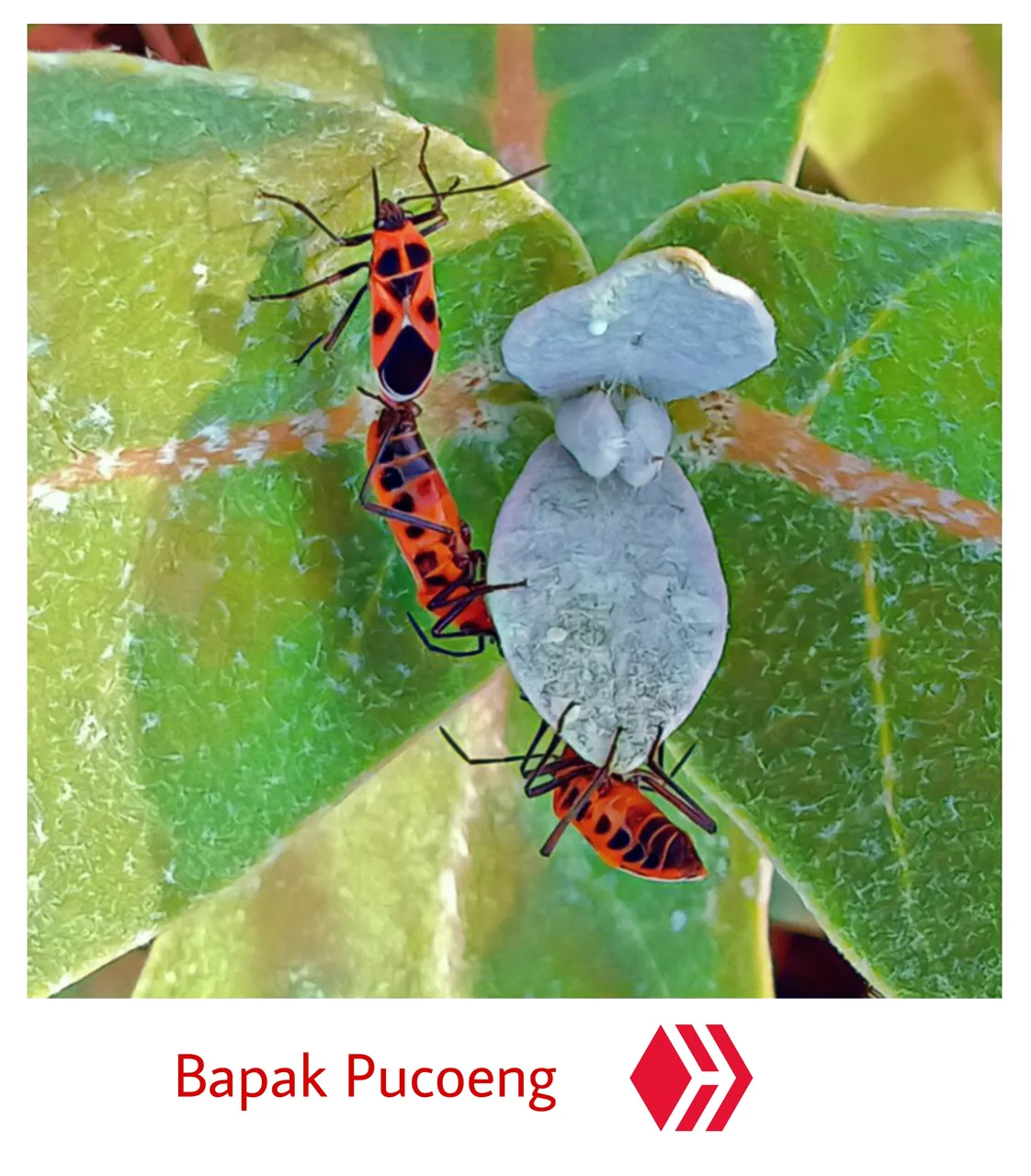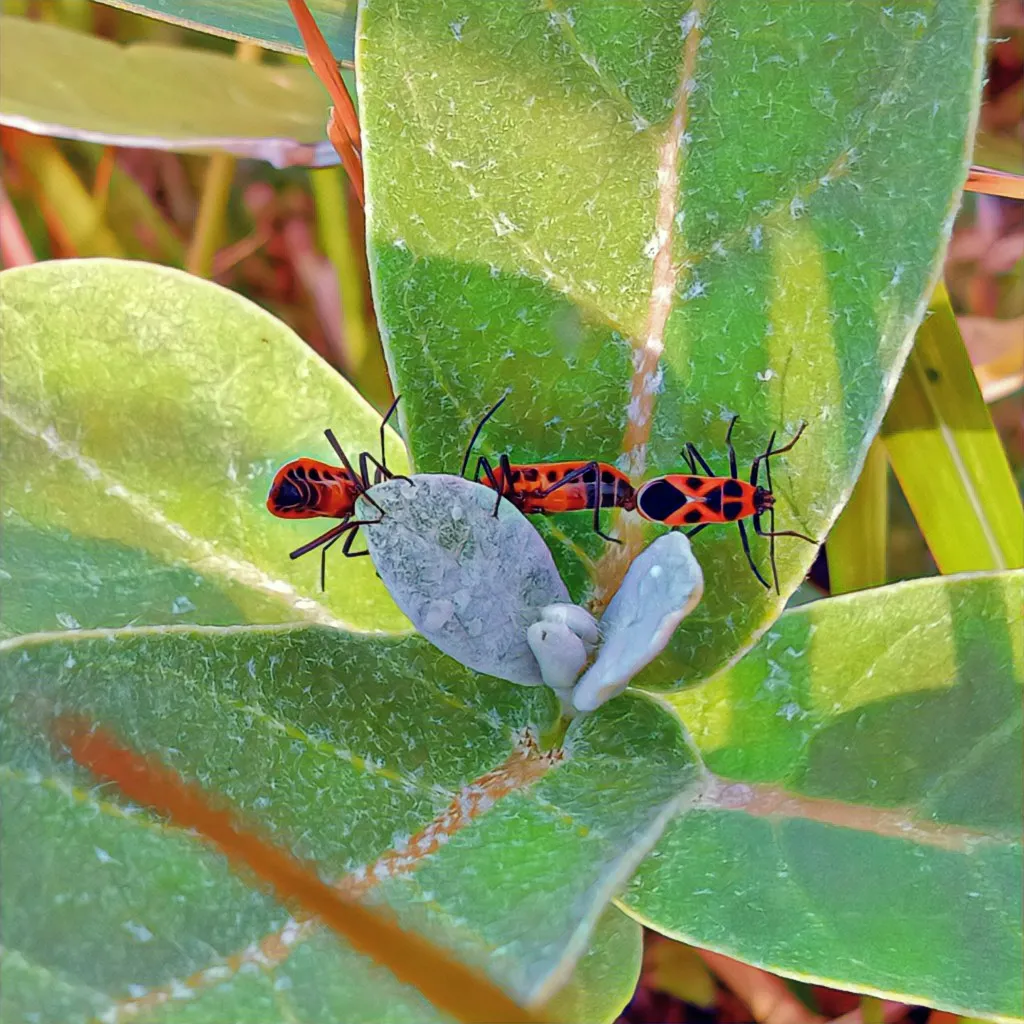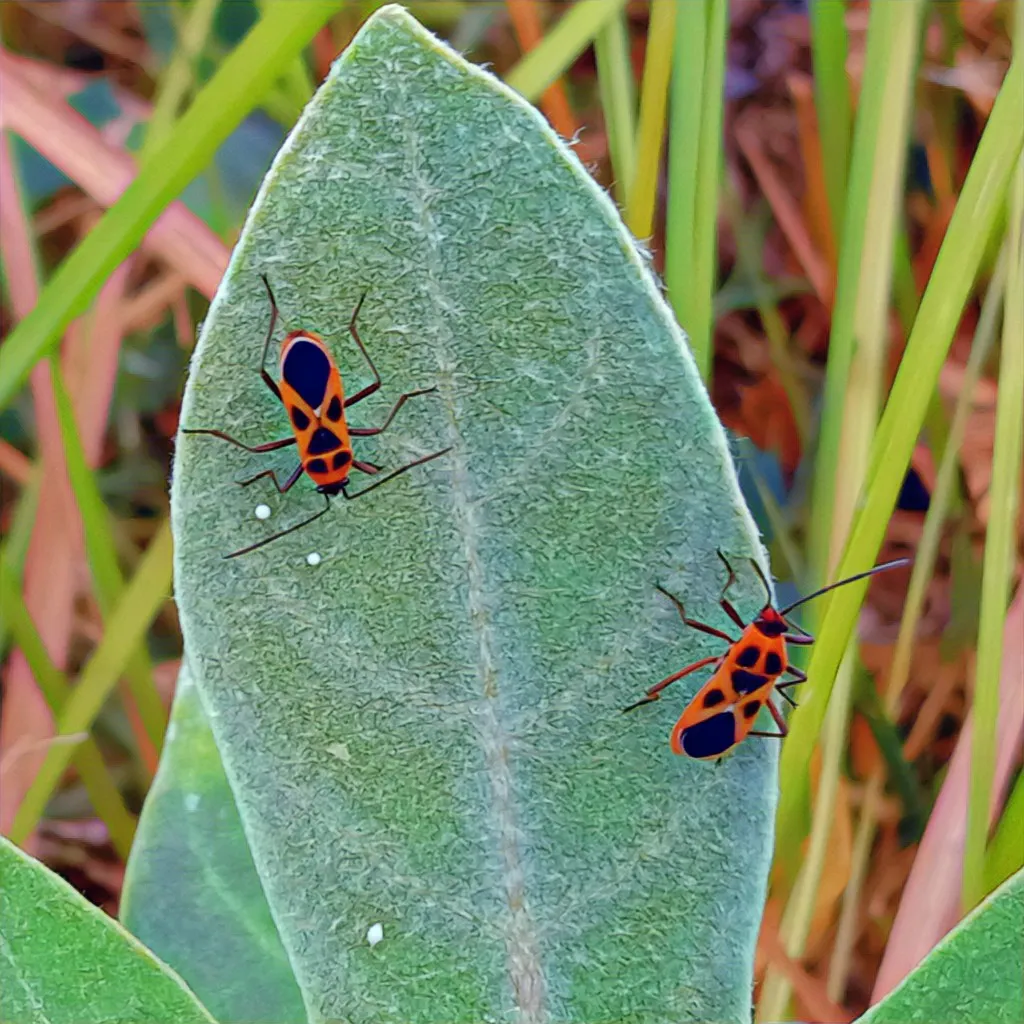Hello Guys... How are you today?
Of course you are very familiar with one of these insect species, and so am I. This species is quite affected by the title of Bapak Pucung (our regional nickname) while its common name is Red Cottton Bug or Cotton Stainer Bug.

When someone mentions a name, namely, the Red Cottton Bug or the Cotton Stainer Bug, of course we are pointing to this beautiful species with a red mixed with black pattern, of course, has several patterns embedded in them.
However, some people do not like its existence because it is considered a boomerang or pest that often destroys every plant, even though when viewed closely it has a unique and beautiful color and body, one of the uniqueness of the upper body is its face, namely, the pattern/mask in the shape of a character's face, as seen in one children's animated film, of course with a certain title which tells about the life conditions of a traditional group.

So in this case, I will personally tell you some facts of their existence, maybe after telling the situation you will also understand or lose their existence around certain areas, especially in our area. In this increasingly sophisticated era, we are still grateful here because we can still find it in several locations that he often chooses. Even though its existence must be searched for in a certain area in every location of the plant which is far from human life. Although there is this but this is rarely found. This is because the mass extermination is carried out by each farmer group in order to be successful in its management (this farmer's behavior is not wrong because the harvest itself is for us too). Eviction activities by each farmer by spraying chemicals with certain techniques on his group so that many die or are allowed to immigrate to certain areas that are safe from these dangerous substances.

Often found in every green plant
If you look for it in every green plant in your yard or on a plant that is located on the terrace of a house where there are lots of ornamental plants, of course it will be difficult, why? Because this particular insect species often shy away from itself when there are many people around it, it would prefer any greenery that is far from human activity (this characteristic is visible in our territory), but in your country is it like that I too don't know for sure. However, this is what is happening in our territory. So that when we wanted to look for it, we had to go to an area far from the usual human activities of the time.
This behavior occurs and can be seen from the results of daily observations on each of our ornamental plants planted in flower pots, meaning that it cannot reproduce when there is noise from human activity but scientifically and the accuracy of the data I also do not understand it

Seeing this situation, I myself did a small research in the form of taking a pair of these species from the nesting location and then placing them on green ornamental plants on our porch. But the next day when we checked again for their presence at the locations mentioned above, their results were gone. I have done this many times to ensure this truth, but the results remain the same.
Thus, it can be ascertained that at least 75% results that they do not like being in a location where there is a lot of noise from human voices and also routine human activities in their daily activities, even though they are in green plants. This means that he likes to be in a quiet location far from human activities.
However, they really like to be in thatch grass that is not managed by humans and their favorite nesting location is in weeds or cotton plants.

Then why are they often seen in every farmer's crop?
In this case, if you understand the explanation above, of course you will get the answer. Because the location of the farmer's garden here is far from people's homes and away from the noise of human activities. Then another thing that can be seen, why did they choose the location of the farmers' crops? Because plants that are managed by fruit farmers have lots of leaves or dense leaves, so it's easier to hide from everything that interferes with their activities, they really don't like being in our ornamental plants on the terrace of the house (as in the initial explanation), because of the existing leaves on the terrace of the house also has a small size so that it is very clear to see their presence.

If in our area especially those that are far from dense trees or far from plantations, then to look for them we have to visit empty locations where there are lots of weeds, generally I often find them in every wild plant such as thistles or wild plants that grow independently without human effort.
In contrast to other butterfly and beetle species or species of bees and moths, we often encounter them in every plant, whether ornamental or wild.
Likewise with ladybug species that are rarely seen in ornamental plant locations (especially on our porch or yard). This ladybug is also seen in many plants where there are many species of Bapak Pucung or Red Cottton.

The results of this writing are based on the results of my own small observations. So the results are not necessarily accurate like the results that have been obtained by experts who are already accurate about their characteristics.
So to obtain accurate or definite results or data, of course, it takes a long time to observe them. Then how are the results of this little research?
So the answer is, because the information has only just been discovered based on the gross eye vision, not by special methods like entomologists do. Hopefully this article will be a new input for anyone who wants to know further and more definite characteristics.
So many short writings, hopefully what has been written is useful for all of us. And see you on another occasion, of course with the same title and community.
Description or explanation of writing and photos
| Post title | Red Cottton Bug |
|---|---|
| Photo source | One's own |
| Photografer | @𝘀𝗼𝗲𝗵𝗮𝗱𝗮 |
| Photo taking location | Lhokseumawe, Aceh |
| Source of writing | Own idea |
| Camera photo | Smartphone type Vivo Y12 |
𝓨𝓸𝓾 𝓬𝓪𝓷 𝓼𝓮𝓮 𝓶𝓮 𝓱𝓮𝓻𝓮
𝔗𝔴𝔢𝔱𝔱𝔢𝔯 𝔉𝔞𝔠𝔢𝔟𝔬𝔬𝔨 𝔏𝔦𝔫𝔨𝔢𝔡𝔩𝔫

